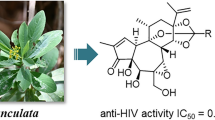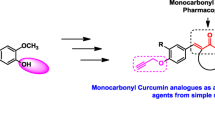Abstract
Biochemical analysis of secondary metabolites of marine old-woman octopus Cistopus indicus (family Octopodidae) led to the identification of two sixteen-membered spiro-linked macrocyclic bislactones, named as cistobislactone A and cistobislactone B with unprecedented feature of henicos framework, based on extensive spectroscopic analyses. Cistobislactone B exhibited potential inhibition property against arachidonate 5-lipoxygenase (IC50 2.18 mM) than that demonstrated by cistobislactone A (IC50 2.54 mM) and standard non-steroidal anti-inflammatory agent ibuprofen (IC50 4.50 mM) thus signifying the higher anti-inflammatory activity of the cistobislactone B analogue. The studied macrocyclic bislactones exhibited promising antioxidant potential, in which cistobislactone B exhibited potential radical quenching (IC50 2.33 mM) and hydrogen peroxide scavenging (IC50 1.81 mM) activities that were proximal to the commercial anti-oxidant α-tocopherol (IC50 ~ 1.60 mM). This further reinforced its attenuation property against arachidonate 5-lipoxygenase. Considerably greater electronic properties coupled with balanced hydrophobicity of cistobislactone B could ascribe the superior ligand-receptor interfaces leading to its anti-inflammatory activity. Molecular docking analysis of cistobislactone B with 5-lipoxygenase recorded lesser docking score (−12.24 kcal mol−1) and binding energy (−11.24 kcal mol−1), which further supported its anti-inflammatory activity. Cistobislactone B, with six fold lesser value of inhibition constant (Ki 5.76 nM) towards 5-lipoxygenase than that displayed by cistobislactone A, could describe the superior protein-ligand interactions of the former. The undescribed cistobislactone B might be a potential natural anti-inflammatory lead to moderate the odds of inflammatory pathologies.




Similar content being viewed by others
Data availability
The chromatographic and spectroscopic spectral data are included as supplementary information.
Abbreviations
- 13C NMR:
-
Carbon-13 nuclear magnetic resonance
- 1H NMR:
-
Proton nuclear magnetic resonance
- 2D-NMR:
-
Two-dimensional nuclear magnetic resonance spectroscopy
- 5-LO:
-
5-lipoxygenase
- ACN:
-
Acetonitrile
- ACP:
-
Acyl carrier protein
- CI:
-
Cistopus indicus
- COSY:
-
Correlation spectroscopy
- COX:
-
Cyclooxygenase
- DEPT:
-
Distortionless enhancement by polarization transfer
- DH:
-
Dehydratase
- DPPH:
-
2,2-diphenyl-1-picrylhydrazyl
- EtOAc:
-
Ethyl acetate
- FTIR:
-
Fourier-transform infrared spectroscopy
- GC(EI)MS:
-
Gas chromatography-mass spectrometry (electron ionization)
- HETE:
-
5-hydroxyeicosatetraenoic acid
- HMBC:
-
Heteronuclear multiple bond correlation
- HR(ESI)MS:
-
High resolution mass spectrometry (electrospray ionization)
- HSQC:
-
Heteronuclear single quantum coherence
- Ile:
-
Isoleucine
- Ki :
-
Inhibition constant
- KS:
-
Ketosynthase
- Leu:
-
Leucine
- log POW :
-
Hydrophobic parameter
- LTB4:
-
Leukotriene B4
- LTs:
-
Leukotrienes
- MeOH:
-
Methanol
- MM2:
-
Molecular mechanics 2
- MT:
-
Methyl transferase
- NOEs:
-
Nuclear overhauser effects
- NOESY:
-
Nuclear overhauser effect spectroscopy
- NSAIDs:
-
Non-steroidal anti-inflammatory drugs
- PGs:
-
Prostaglandins
- Phe:
-
Phenylalanine
- Pl:
-
Polarizability
- Q-TOF LC/MS:
-
Quadruple Time of Flight Liquid Chromatography Mass Spectrometry
- RP-HPLC:
-
Reverse-phase high pressure liquid chromatography
- TLC:
-
Thin layer chromatography
- tPSA:
-
Topological polar surface area
- UV-VIS:
-
Ultraviolet Visible
References
Haeggström JZ, Funk CD. Lipoxygenase and leukotriene pathways: Biochemistry, biology, and roles in disease. Chem Rev. 2011;111:5866–98. https://doi.org/10.1021/cr200246d.
Rainsford KD, Ying C, Smith F. Effects of 5-lipoxygenase inhibitors on interleukin production by human synovial tissues in organ culture: Comparison with interleukin-1-synthesis inhibitors. J Pharm Pharmacol. 1996;48:46–52. https://doi.org/10.1111/j.2042-7158.1996.tb05875.x.
Rouzer CA, Marnett LJ. Cyclooxygenases: Structural and functional insights. J Lipid Res. 2009;50(Suppl):S29–S34. https://doi.org/10.1194/jlr.R800042-JLR200.
Fiorucci S, Meli R, Bucci M, Cirino G. Dual inhibitors of cyclooxygenase and 5-lipoxygenase. A new avenue in anti-inflammatory therapy? Biochem Pharmacol. 2001;62:1433–8. https://doi.org/10.1016/s0006-2952(01)00747-x.
Campbell WC. History of avermectin and ivermectin, with notes on the history of other macrocyclic lactone antiparasitic agents. Curr Pharm Biotechnol. 2012;13:853–65. https://doi.org/10.2174/138920112800399095.
Vardanyan R, Hruby V. Synthesis of best-seller drugs. United States: Academic press, Elsevier; 2016.
Frank AT, Farina NS, Sawwan N, Wauchope OR, Qi M, Brzostowska EM, et al. Natural macrocyclic molecules have a possible limited structural diversity. Mol Divers. 2007;11:115–8. https://doi.org/10.1007/s11030-007-9065-5.
Wessjohann LA, Ruijter E, Garcia-Rivera D, Brandt W. What can a chemist learn from nature’s macrocycles? A brief, conceptual view. Mol Divers. 2005;9:171–86. https://doi.org/10.1007/s11030-005-1314-x.
Ojima K-I, Yangchum A, Laksanacharoen P, Tasanathai K, Thanakitpipattana D, Tokuyama H, et al. Cordybislactone, a stereoisomer of the 14-membered bislactone clonostachydiol, from the hopper pathogenic fungus Cordyceps sp. BCC 49294: Revision of the absolute configuration of clonostachydiol. J Antibiot. 2018;71:351–8. https://doi.org/10.1038/s41429-017-0008-9.
Vidal JP, Escale R, Girard JP, Rossi JC, Chantraine JM, Aumelas A. Lituarines A, B, and C: a new class of macrocyclic lactones from the New Caledonian sea pen Lituaria australasiae. J Org Chem. 1992;57:5857–60. https://doi.org/10.1021/jo00048a017.
Chen XL, Liu HL, Li J, Xin GR, Guo YW. Paracaseolide A, first α-alkylbutenolide dimer with an unusual tetraquinane oxa-cage bislactone skeleton from Chinese mangrove Sonneratia paracaseolaris. Org Lett. 2011;13:5032–5. https://doi.org/10.1021/ol201809q.
Chakraborty K, Krishnan S, Joy M. Macrocyclic lactones from seafood Amphioctopus neglectus: Newly described natural leads to attenuate angiotensin-II induced cardiac hypertrophy. Biomed Pharmacother. 2019;110:155–67. https://doi.org/10.1016/j.biopha.2018.11.034.
Sreeja V, Biju Kumar A, Norman MD. First report of Cistopus taiwanicus Liao and Lu. 2009 (Cephalopoda: Octopodidae) from the Indian coast. J Aquat Biol Fish. 2015;3:98–104.
Central Marine Fisheries Research Institute. Annual Report 2019. http://eprints.cmfri.org.in/id/eprint/14753.
FRAD, CMFRI, 2020. Marine Fish Landings in India 2019. Technical Report. ICAR-Central Marine Fisheries Research Institute, Kochi.
Chakraborty K, Joy M. Anti-diabetic and anti-inflammatory activities of commonly available cephalopods. Int J Food Prop. 2017;20:1655–65. https://doi.org/10.1080/10942912.2016.1217008.
Chakraborty K, Joy M, Raola VK, Makkar F. Angiotensin-1 converting enzyme inhibitory activities of common edible cephalopods and their antioxidative effects using different in vitro models. J Food Biochem. 2017;41:e12268. https://doi.org/10.1111/jfbc.12268.
Salas S, Chakraborty K. An unreported polyether macrocyclic lactone with antioxidative and anti-lipoxygenase activities from the Babylonidae gastropod mollusc Babylonia spirata. Med Chem Res. 2018;27:2446–53. https://doi.org/10.1007/s00044-018-2248-z.
Chakraborty K, Francis P. Stomopneulactone D from long-spined sea urchin Stomopneustes variolaris: Anti-inflammatory macrocyclic lactone attenuates cyclooxygenase-2 expression in lipopolysaccharide-activated macrophages. Bioorg Chem. 2020;103:104140. https://doi.org/10.1016/j.bioorg.2020.104140.
Li J, Zhang S, Zhang H, Wang H, Zhang J, Chen A, et al. Isolation and identification of new macrocyclic lactones from a genetically engineered strain Streptomyces bingchenggensis BCJ60. J Antibiot. 2017;70:297–300. https://doi.org/10.1038/ja.2016.130.
Zidar N, Odar K, Glavac D, Jerse M, Zupanc T, Stajer D. Cyclooxygenase in normal human tissues-is COX-1 really a constitutive isoform, and COX-2 an inducible isoform? J Cell Mol Med. 2009;13:3753–63. https://doi.org/10.1111/j.1582-4934.2008.00430.x.
Subbarao K, Jala VR, Mathis S, Suttles J, Zacharias W, Ahamed J, et al. Role of leukotriene B4 receptors in the development of atherosclerosis: Potential mechanisms. Arterioscler Thromb Vasc Biol. 2004;24:369–75. https://doi.org/10.1161/01.ATV.0000110503.16605.15.
Griffiths RJ, Pettipher ER, Koch K, Farrell CA, Breslow R, Conklyn MJ, et al. Leukotriene B4 plays a critical role in the progression of collagen-induced arthritis. Proc Natl Acad Sci U S A. 1995;92:517–21. https://doi.org/10.1073/pnas.92.2.517.
Lordan R, Tsoupras A, Zabetakis I. Inflammation (chapter 2). In: Zabetakis I, Lordan R, Tsoupras A, editors. The Impact of Nutrition and Statins on Cardiovascular Diseases. Ireland: Academic Press; 2019; ISBN 9780128137925:23-51. https://doi.org/10.1016/B978-0-12-813792-5.00002-1.
Basil MC, Levy BD. Specialized pro-resolving mediators: Endogenous regulators of infection and inflammation. Nat Rev Immunol. 2016;16:51–67. https://doi.org/10.1038/nri.2015.4.
Lipinski C, Hopkins A. Navigating chemical space for biology and medicine. Nature. 2004;432:855–61. https://doi.org/10.1038/nature03193.
Larsen LN, Dahl E, Bremer J. Peroxidative oxidation of leucodichloroluorescein by prostaglandin H synthase in prostaglandin biosynthesis from polyunsaturated fatty acids. Biochim Biophys Acta. 1996;1299:47–53. https://doi.org/10.1016/0005-2760(95)00188-3.
Maneesh A, Chakraborty K, Makkar F. Pharmacological activities of brown seaweed Sargassum wightii (family Sargassaceae) using different in vitro models. Int J Food Prop. 2017;20:931–45. https://doi.org/10.1080/10942912.2016.1189434.
Gulcin I. Comparison of in vitro antioxidant and antiradical activities of L-tyrosine and L-dopa. Amino Acids. 2007;32:431–8. https://doi.org/10.1007/s00726-006-0379-x.
Chew YL, Lim YY, Omar M, Khoo KS. Antioxidant activity of three edible seaweeds from two areas in South East Asia. LWT. J Food Sci Technol. 2008;41:1067–72. https://doi.org/10.1016/j.lwt.2007.06.013.
Maneesh A, Chakraborty K. Previously undescribed fridooleanenes and oxygenated labdanes from the brown seaweed Sargassum wightii and their protein tyrosine phosphatase-1B inhibitory activity. Phytochemistry. 2017;144:19–32. https://doi.org/10.1016/j.phytochem.2017.08.011.
Borbulevych OY, Jankun J, Selman SH, Skrzypczak-Jankun E. Lipoxygenase interactions with natural flavonoid, quercetin, reveal a complex with protocatechuic acid in its X-ray structure at 2.1 A resolution. Proteins. 2004;54:13–19. https://doi.org/10.1002/prot.10579.
Acknowledgements
The authors gratefully acknowledge the funding by the Indian Council of Agricultural Research (ICAR, New Delhi, India) (Grant number MBT/HLT/SUB23). The authors are grateful to the Director, ICAR-CMFRI, and Head, Marine Biotechnology Division of ICAR-CMFRI for facilitating the research activities. The authors are thankful to the Chairman, Department of Chemistry, Mangalore University (Karnataka, India) for providing the necessary support.
Author contributions
SKP and KC designed research, conducted experiments, and analyzed data. KC acquired funds and conceptualized the work. SKP drafted the manuscript. KC reviewed and edited the manuscript. All authors read and approved the manuscript.
Author information
Authors and Affiliations
Corresponding author
Ethics declarations
Conflict of interest
The authors declare no competing interests.
Additional information
Publisher’s note Springer Nature remains neutral with regard to jurisdictional claims in published maps and institutional affiliations.
Supplementary Information
Rights and permissions
About this article
Cite this article
Paulose, S.K., Chakraborty, K. Cistobislactones A-B, two sixteen-membered spiro-linked macrocylic bislactones from marine octopus Cistopus indicus: new anti-inflammatory agents attenuate arachidonate 5-lipoxygenase. Med Chem Res 30, 2042–2054 (2021). https://doi.org/10.1007/s00044-021-02790-x
Received:
Accepted:
Published:
Issue Date:
DOI: https://doi.org/10.1007/s00044-021-02790-x




